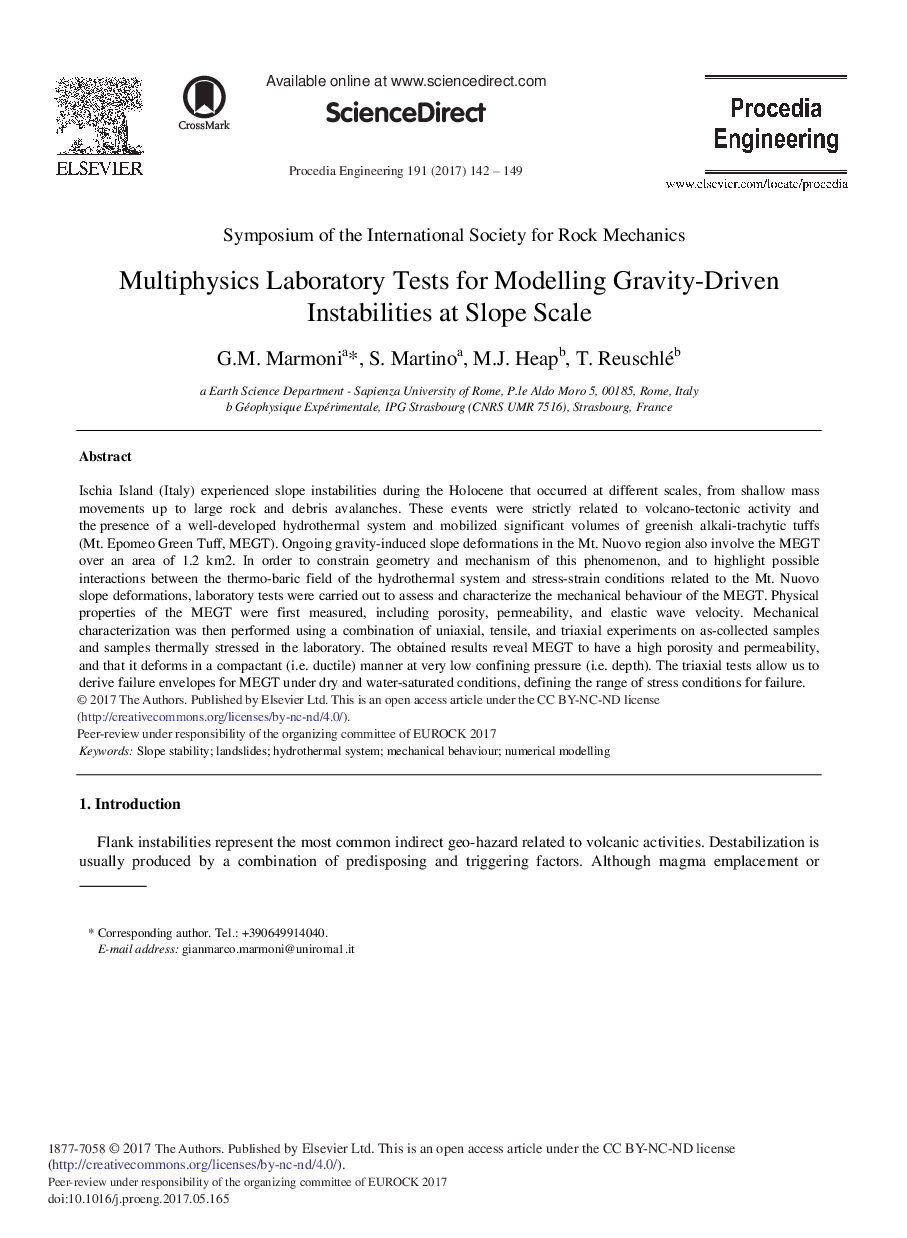| کد مقاله | کد نشریه | سال انتشار | مقاله انگلیسی | نسخه تمام متن |
|---|---|---|---|---|
| 5027491 | 1470635 | 2017 | 8 صفحه PDF | دانلود رایگان |
Ischia Island (Italy) experienced slope instabilities during the Holocene that occurred at different scales, from shallow mass movements up to large rock and debris avalanches. These events were strictly related to volcano-tectonic activity and the presence of a well-developed hydrothermal system and mobilized significant volumes of greenish alkali-trachytic tuffs (Mt. Epomeo Green Tuff, MEGT). Ongoing gravity-induced slope deformations in the Mt. Nuovo region also involve the MEGT over an area of 1.2 km2. In order to constrain geometry and mechanism of this phenomenon, and to highlight possible interactions between the thermo-baric field of the hydrothermal system and stress-strain conditions related to the Mt. Nuovo slope deformations, laboratory tests were carried out to assess and characterize the mechanical behaviour of the MEGT. Physical properties of the MEGT were first measured, including porosity, permeability, and elastic wave velocity. Mechanical characterization was then performed using a combination of uniaxial, tensile, and triaxial experiments on as-collected samples and samples thermally stressed in the laboratory. The obtained results reveal MEGT to have a high porosity and permeability, and that it deforms in a compactant (i.e. ductile) manner at very low confining pressure (i.e. depth). The triaxial tests allow us to derive failure envelopes for MEGT under dry and water-saturated conditions, defining the range of stress conditions for failure.
Journal: Procedia Engineering - Volume 191, 2017, Pages 142-149
